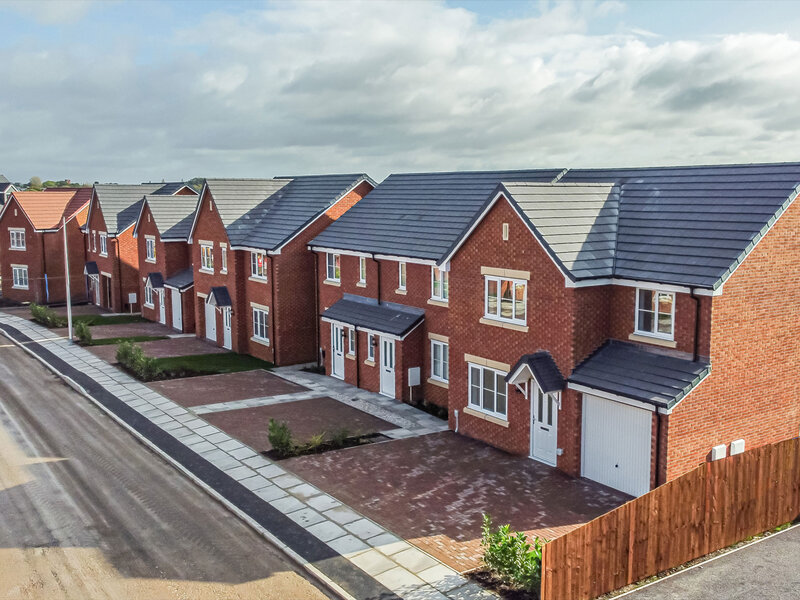The UK’s Build-to-Rent (BTR) sector has expanded by 173% over the past five years, according to new research from debt advisory and investment firm Excellion Capital, as institutional and private investors increasingly shift their focus from traditional Build-to-Sell (BTS) models to rental-led development strategies.
The analysis shows that by the end of 2024, an estimated 123,539 BTR homes had been completed across the UK, up from just over 45,000 in Q4 2019.
With approximately 18,000 completions in both 2023 and 2024, the sector has seen consistent year-on-year delivery – yet still accounts for only 2.2% of the UK’s 5.6 million private rented homes, signalling considerable headroom for further expansion.
London remains the epicentre of BTR activity, accounting for 54,352 completed homes as of Q4 2024 – a 14.5% increase on the previous year. However, regional growth is accelerating at a faster pace, with completions outside the capital up 19.1% year-on-year. The national average growth rate stood at 17.1% over the same period.
SATURATION POINT
This shifting dynamic suggests the capital’s more mature BTR market may be reaching a saturation point, prompting investors to seek opportunities in cities across the Midlands, North, and devolved nations – where development costs are lower and rental yields are proving more favourable.
INVESTMENT HITS RECORD HIGH
Investor appetite for the BTR model is intensifying. Excellion estimates that total investment into the UK BTR market reached a record £5.2 billion in 2024, marking an 11% increase on 2023. Notably, £1.9 billion was deployed in Q4 alone, highlighting the growing momentum behind the sector.
YIELDS OUTPERFORM TRADITIONAL RENTALS
Excellion’s analysis of rental yields indicates that BTR assets continue to outperform the wider Private Rented Sector (PRS). In London, BTR properties offered an average yield of 4.93% at the start of 2024, compared to 4.45% for general PRS stock.
Regional BTR yields are even more attractive: the North East leads with average yields of 7.65%, while many secondary cities deliver between 5% and 6%. For income-focused investors and developers, particularly those priced out of London, these regional margins present a compelling case for investment.
PREMIUM PRODUCT, PREMIUM RETURNS
BTR’s stronger returns are underpinned by a differentiated tenant offering. Designed and built for long-term rental occupancy, BTR developments prioritise high build quality, extended tenancy options, and lifestyle-enhancing amenities – such as concierge services, on-site gyms, co-working spaces, and exclusive discounts via local partnerships.
TIME TO PIVOT

Robert Sadler, Vice President of Real Estate at Excellion Capital, says: “It is our view that property investors should now be thinking about pivoting away from Build-to-Sell (BTS) and towards Build-to-Rent, particularly outside of London.
“This is a sector that is growing at astonishing pace. London has been a useful proof of concept for both the demand for BTR homes and the returns available to investors, so now it’s spreading across the whole country, not least our secondary cities such as Manchester, Newcastle, and Birmingham.
“Investors should also be aware that some lenders are now showing greater enthusiasm for BTR over BTS. In fact, some of them are focussing purely and exclusively on BTR due to concerns about the exit from BTS developments. At Excellion Capital, we have a long track record of helping investors and developers secure the finance needed for this type of project at the most attractive rates.”
RISING RATES
Sadler says that since rates have risen sharply, many developers have struggled to repay development loans on BTS developments as a result of slow sales and reduced selling prices.
He adds: “As such, developers have been forced to take on development exit loans or retain units for rent.
“On the other hand, buyers of stabilised BTR developments tend to be large institutions which represents an extremely attractive exit for developers.
“So, with high market demand, strong yields, greater availability of finance, and the opportunity for a clean exit, we very much expect to see more and more developers showing preference for BTR over BTS.
“While interest rates remain relatively high, developers should be thinking about and planning for new projects later in the year when rates are expected to fall and cost inflation to settle. Additionally, the nation’s continually strong rental demand will put upward pressure on rents, which will help to offset elevated development costs.”










